There is no doubt that snakes have captured our imaginations throughout history. They are worshipped, and they are feared, and they make frequent appearances in fairy stories and mythology, whether they are portrayed as the tresses of Medusa or the guardians of water.
Unfortunately for snakes, however, they have a bit of an image problem. This is a shame, because persecution, habitat loss, pollution and climate change are all having an impact on snakes, which could cause their populations to dwindle.
Jump to:
- What is a snake?
- What is the biggest snake?
- What is the smallest snake?
- What do snakes eat?
- What is venom made from?
- How long do snakes live?
- What is the life cycle of a snake?
- How do snakes mate?
- Is it true that some snakes have vestigial legs?
What is a snake?
Snakes, along with their close relatives the lizards and worm-lizards, belong to a group of reptiles called the Squamata, or ‘scaled reptiles’. There are more than 4,000 species of snake. These adaptable animals have evolved to occupy all sorts of habitats, including forests, oceans, wetlands, trees and deserts. In fact, the only continent they do not live is Antarctica.
Snakes are ectothermic animals, which means that they cannot generate their own body heat and must obtain their warmth from their surroundings. You might see snakes basking in the sunshine in the mornings in order to warm their bodies up so they can be active. If it is too hot, then they’ll seek shelter so that they do not overheat.
Snakes lack limbs, although some do have ‘vestigial limbs’ – more on that later. They do not have moveable eyelids; instead, they have a clear scale over their eyes called a ‘brille’ (rather like a contact lens). When they shed their skin, which they do at irregular intervals, the brille will be shed too. They do not have an external ear opening, and they have a forked tongue, which allows them to ‘taste’ the air to seek their prey.
What is the biggest snake?
The longest snake in the world
The longest snake in the world is the reticulated python.
"There's been stories of how big they get. And they can get to about nine or 10 metres,” says Prof Mark O’Shea, a herpetologist at the University of Wolverhampton. “But they're not massively heavy, a really big female – because the females are larger – might be 75 kilograms.”
The heaviest snake in the world
The heaviest snake is the green anaconda. They might get to eight metres in length, but large females can reach up to 100 kilograms.
“It’s because anacondas are aquatic snakes,” says O’Shea. “The water supports their weight.”
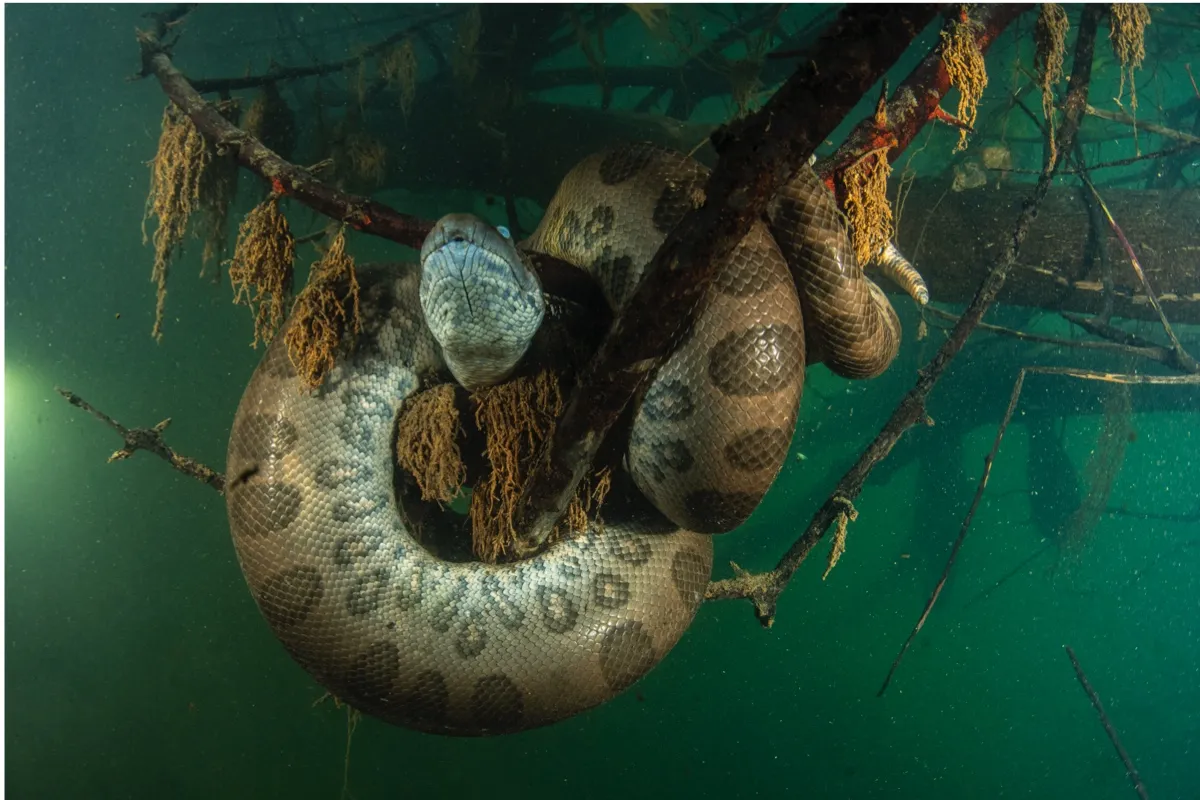
What is the smallest snake?
The smallest adult snake is the Barbados blindsnake. It measures just 10cm in length.
“That’s actually a very endangered little snake. It's a soil snake, it burrows. It’s not really got proper eyes, all the eyes will tell it is when it's exposed to light. You wouldn't generally see them out and about unless it was raining, because they're under the ground eating termites and larvae,” says O’Shea.
“It's endemic to Barbados and there are only three specimens that have been found. It probably was a rainforest species living in termite mines in the rainforest, but Barbados has lost a lot of its rainforest.”
What do snakes eat?
Unlike lizards, which may be vegetarian or omnivorous, snakes are exclusively carnivorous. They’ll consume a wide range of food, including invertebrates, fish, amphibians, other reptiles, birds and their eggs, or mammals. While some snakes are specialised to eat a particular diet, others can consume a wide variety of prey – whatever they can fit into their mouth!
Some prey, such as invertebrates, small fish or frogs, may not need to be killed before swallowing, and the snake will just gulp them down.
However, other prey may need to be subdued first, as they are too large or dangerous to swallow alive. And this is where snakes have evolved two ingenious systems to handle trickier meals: constriction and envenomation.
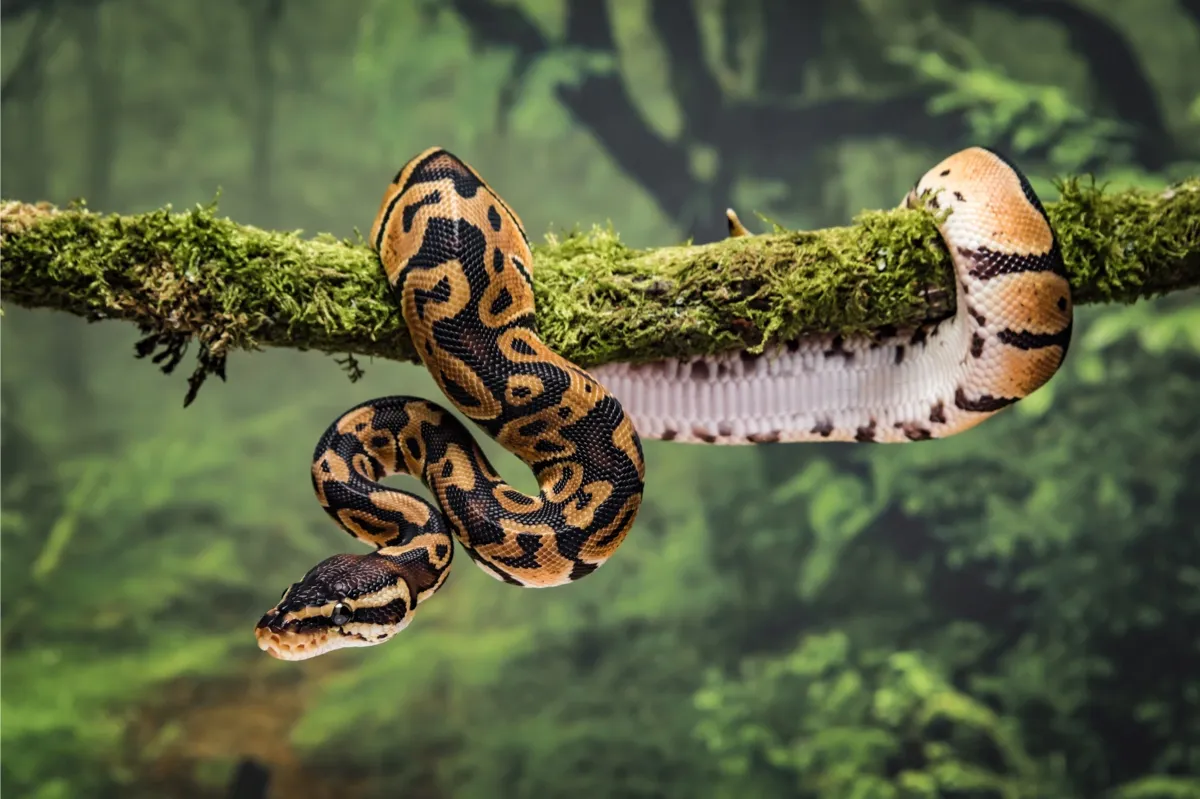
Constriction is where a snake wraps its coils around their prey, and tightens its grip until the animal is dead. “Constriction is not crushing of bones, nor is it suffocation. It actually kills the prey because the coils are so tight, they stop circulation and the prey dies of a heart attack. And it can be very fast. Surprisingly fast. Constriction kills quickly,” says O’Shea.
Non-venomous snakes, such as boas, pythons or corn snakes, have simple, sharp teeth that point backwards to prevent their prey from escaping. But snakes that use venom have very different teeth.
There are rear-fanged snakes, which have a pair of fang-like teeth at the back of their upper jaws. These teeth have grooves that the venom flows down. As the venom is delivered from the back of the mouth, it is a more laborious process, meaning that these snakes tend to feed on smaller prey and won’t cause serious pain or injury to humans. There are a couple of exceptions, however. One of these is the boomslang, a tree-dwelling snake from Africa, which is capable of killing people.
Then there are snakes, such as cobras, mambas and coral snakes, that deliver their venom via a pair of large, fixed fangs at the front of the mouth. These have a channel down the centre to carry the venom to the tip of the fang, and into the prey. These snakes will generally bite their prey and hang on until the venom takes effect.
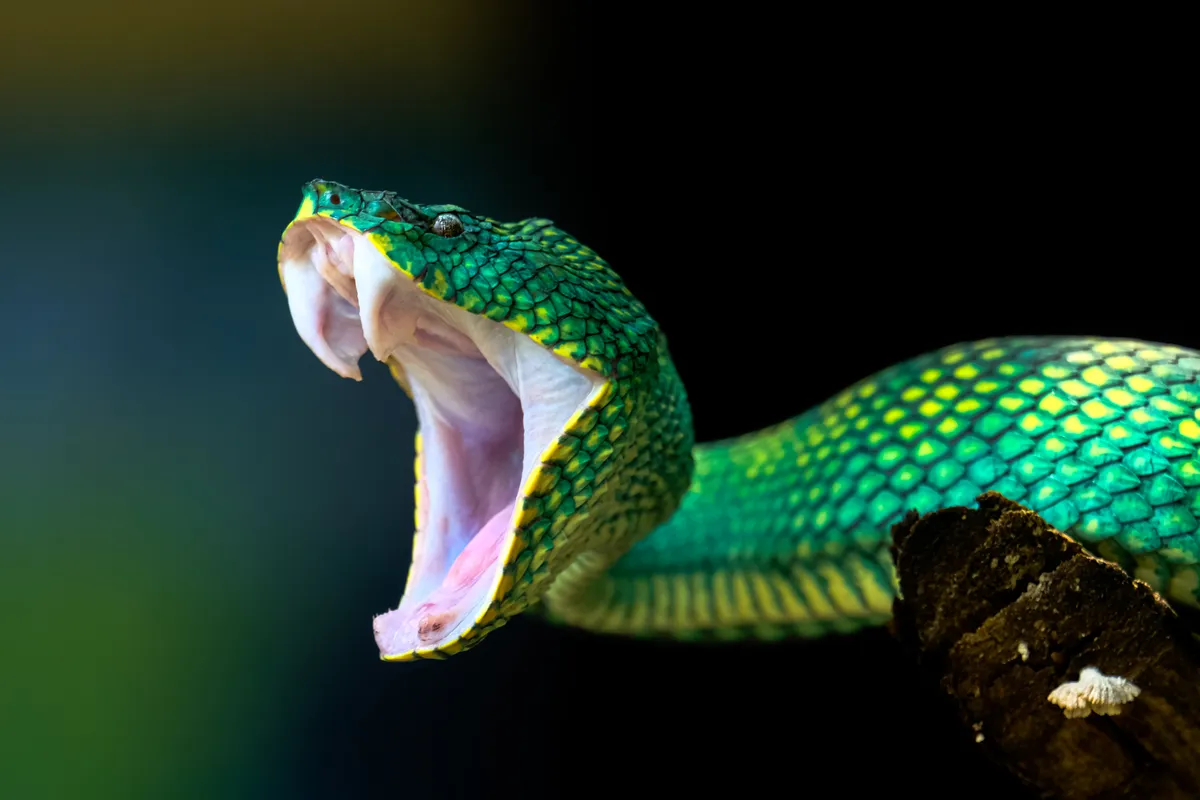
Finally, there are the vipers, which have extremely long, hinged fangs that swing forward to quickly inject venom deep into prey. The rapid delivery system means that the snake can get out of harm’s way after biting, and then wait for the prey to die before moving in to chow down.
Venom is mostly used in order to subdue and kill prey, although snakes will bite defensively if they feel threatened. Yet one group of snakes, the spitting cobras, use their venom to deter predators. Intriguingly, research published in the journal Science in 2021, found that the emergence of spitting cobras in Africa seemed to happen at the same time as the evolution of bipedal hominins. The researchers theorise that the snakes may have started to spit venom at the eyes of early humans as a form of defence.
What is venom made from?
“Venom is a complex cocktail of enzymes and proteins. And a particular snake very often doesn't just have one kind,” says O’Shea.
Venoms can be neurotoxins, which attack the nervous system and muscles, and can cause paralysis. Then there are venoms that affect the blood and circulatory system, causing problems with clotting. Others damage the tissues, causing pain and cell death. While some will attack the organs, such as the heart or kidneys.
Venom composition is highly adaptable, with individual snakes of the same species using a different cocktail depending on their age, habitat or prey.
Read more about snakes:
- Snakes on a plain: Dinosaur-killing asteroid impact led to a global explosion in serpent species
- What evolutionary advantage did snakes gain by losing their legs?
How long do snakes live?
Obviously, there are thousands of species of snakes out there, and their lifespans can vary enormously. What we do know, however, is that captive or pet snakes will tend to live longer than those in the wild. A pet royal python, if well cared for, could live for 30 years or more, whereas in the wild they’d be lucky to manage 10 years.
Snakes in the wild contend with food shortages, predation, human impact, habitat loss and greater fluctuations in temperature, all of which can have an impact on their lifespan.
The oldest living snake in captivity is Annie the green anaconda, who was born on 1 July 1983.
What is the life cycle of a snake?
Unlike the amphibians from which they evolved, snakes do not need to return to the water to breed.
The majority of snakes are oviparous, which means they lay eggs. Snake eggs have leathery shells, and generally the female will lay her clutch in a hidden place and then leave them. Some snakes do show maternal care, however. A python mother, for example, will coil her body protectively around the eggs throughout their development, even raising her body temperature slightly to aid incubation.
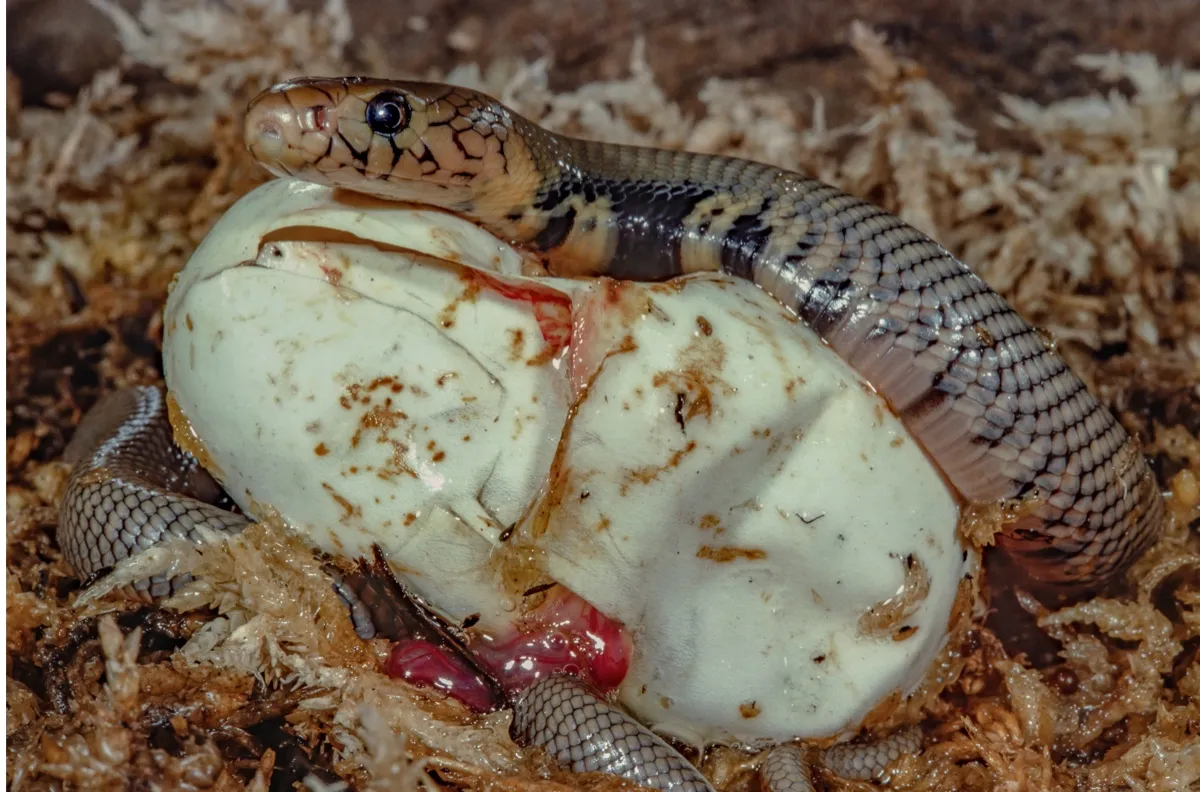
Other snakes are viviparous, and retain the embryos inside their body throughout development. The female will give birth to live baby snakes, which are born encased within a transparent sac, from which they will emerge and slither off to start their independent lives.
Viviparity has some advantages and disadvantages. On the plus side, the baby snakes are protected throughout their development, with the female acting as a mobile incubator. But the downside is that if the female is killed, all her offspring will die too. She may also struggle to feed, as so much of her body is taken up with her babies.
But viviparity does mean that snakes can venture into regions that would be too cold for oviparous snakes.
“Grass snakes occur as far north as southern Scotland, while Britain's only venomous snake, the northern adder, can live all the way up to the northern tip of Scotland and on some of the inner Hebrides. And the reason why the adder’s distributed so widely and the grass snake is stuck in southern Scotland is down to their reproduction,” says O’Shea.
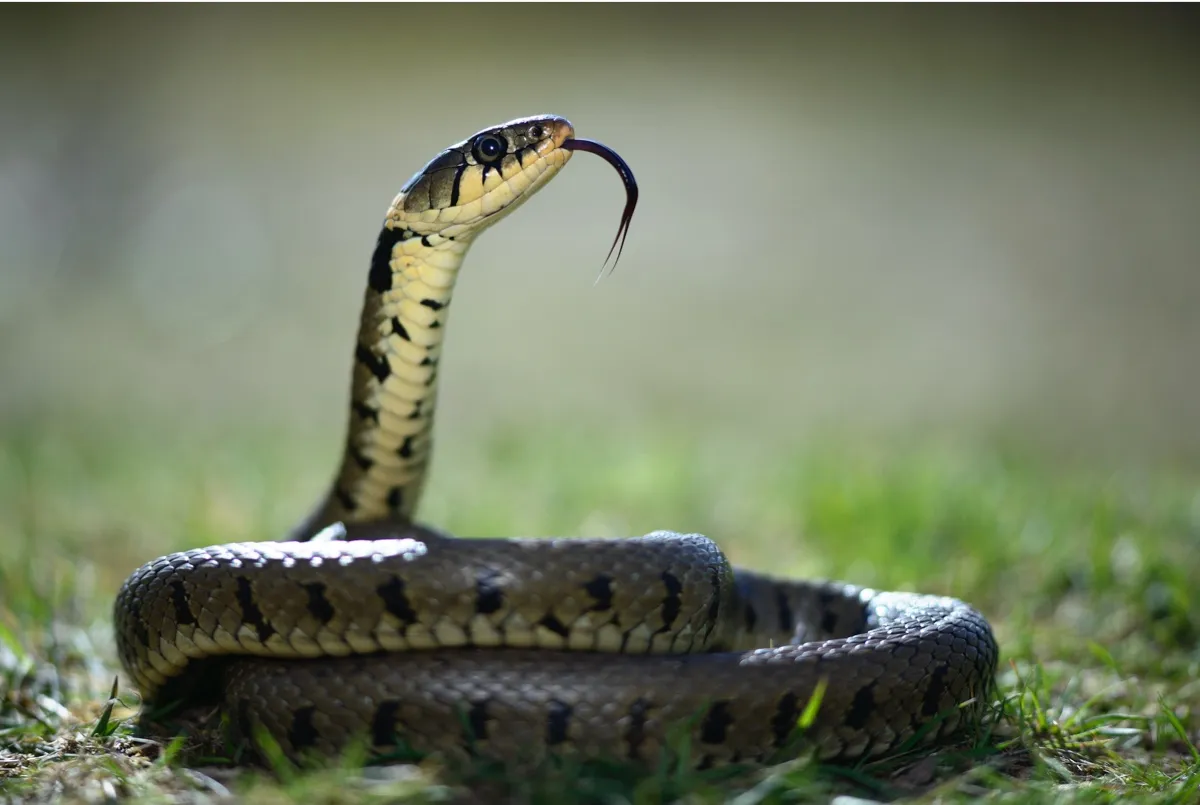
“Grass snakes lay eggs, somewhere nice and warm like a compost heap or something like that, and then they leave them. If the weather gets cold, like in northern Scotland, the eggs might not survive. But an adder gives birth to live young, so she can move around when it's nice and warm, or hide away when it’s cold. She's much better adapted for cold climates. The northern adder is actually the northernmost distributed snake in the world. It's found well north of the Arctic Circle in Norway.”
The number of young is hugely variable, and highly dependent on the species. Whether they are egg-layers or live-bearers, snakes may have as few as one, or more than 50 offspring.
Once they’ve hatched or been born, the baby snakes are on their own and are fully capable hunters.
How do snakes mate?
Generally, there aren’t any massive differences between the sexes in snakes, and it takes an expert to be able to tell them apart. There are exceptions (because nature is never straightforward!), with the aforementioned green anaconda and reticulated python females achieving larger sizes than the males, for example.
When a female snake is ready to mate, she will lay down a trail of pheromones. A male snake will follow this path, using his forked tongue to detect the chemicals.
Of course, he may not be the only male to be keen to mate with the female. In certain species, males may accumulate in large numbers around a female. For example, red-sided gartersnakes will form mating balls, in which 10 or more males surround one or two females.
Snake sex is internal, and the male snake has a pair of penises called ‘hemipenes’. Generally, these are tucked away inside his body, and are located towards the base of the tail.
“They're only everted when the snake is going to mate,” says O’Shea. “As he's normally crawling around on his belly, he wouldn't have the hemipenes for very long if they were external!”
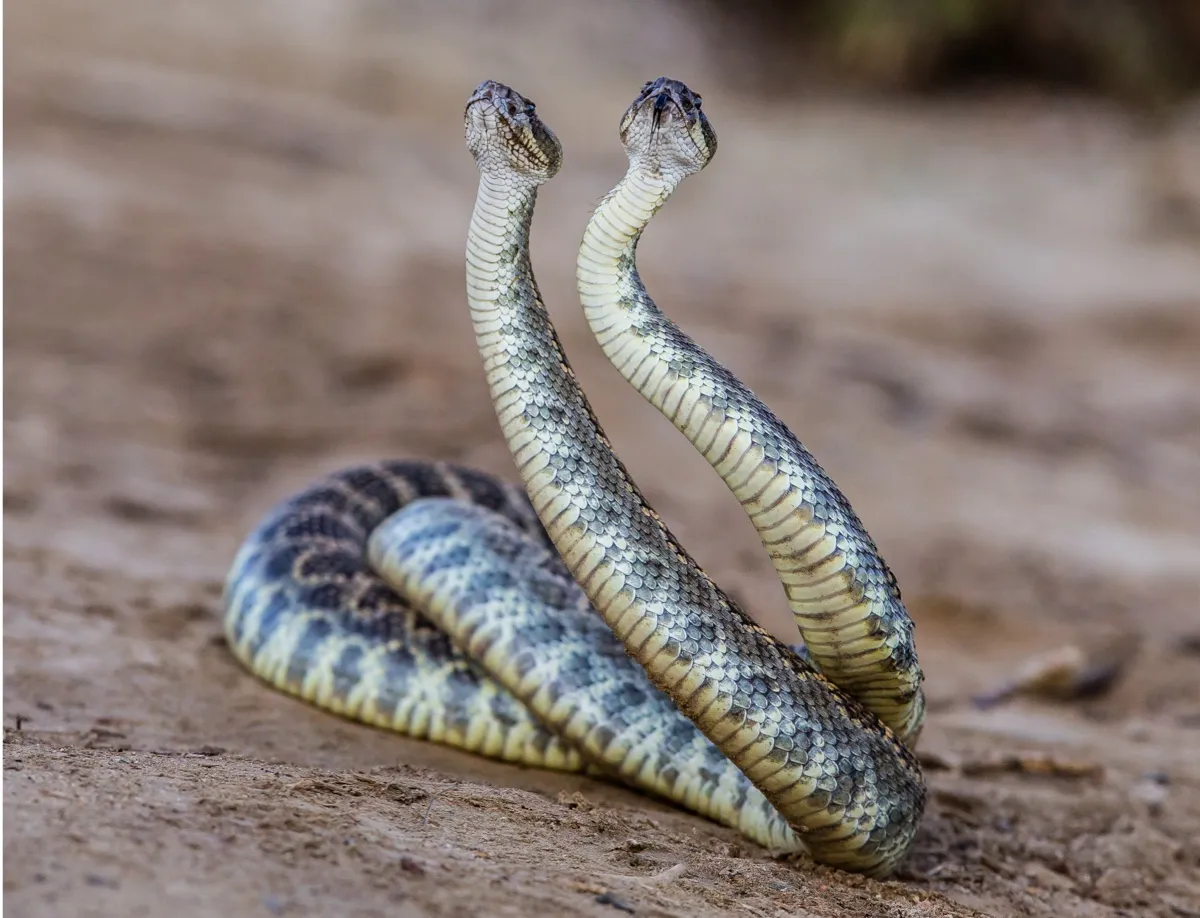
The male will then crawl along the female’s back to court her, stroking her along her body. He will try to encourage her to lift her tail so he can insert one of the hemipenes into her reproductive opening (the cloaca).
Some snakes have slightly different methods of courtship. For example, those species with vestigial limbs may use these appendages to stroke the female. Elsewhere, the turtle-headed sea snake has a special scale on his snout that he uses to tickle the female on her back.
Is it true that some snakes have vestigial legs?
Snakes evolved from animals with four limbs. Snakes do not tend to fossilise well as their skeletons are quite delicate, but evidence suggests they first appeared in the Jurassic or Cretaceous.
While many snakes have completely lost all traces of limbs, the boas and pythons have tiny remnants of hind legs, which are just about visible towards the base of their tail. These can be larger in the males, and are used for courting females.
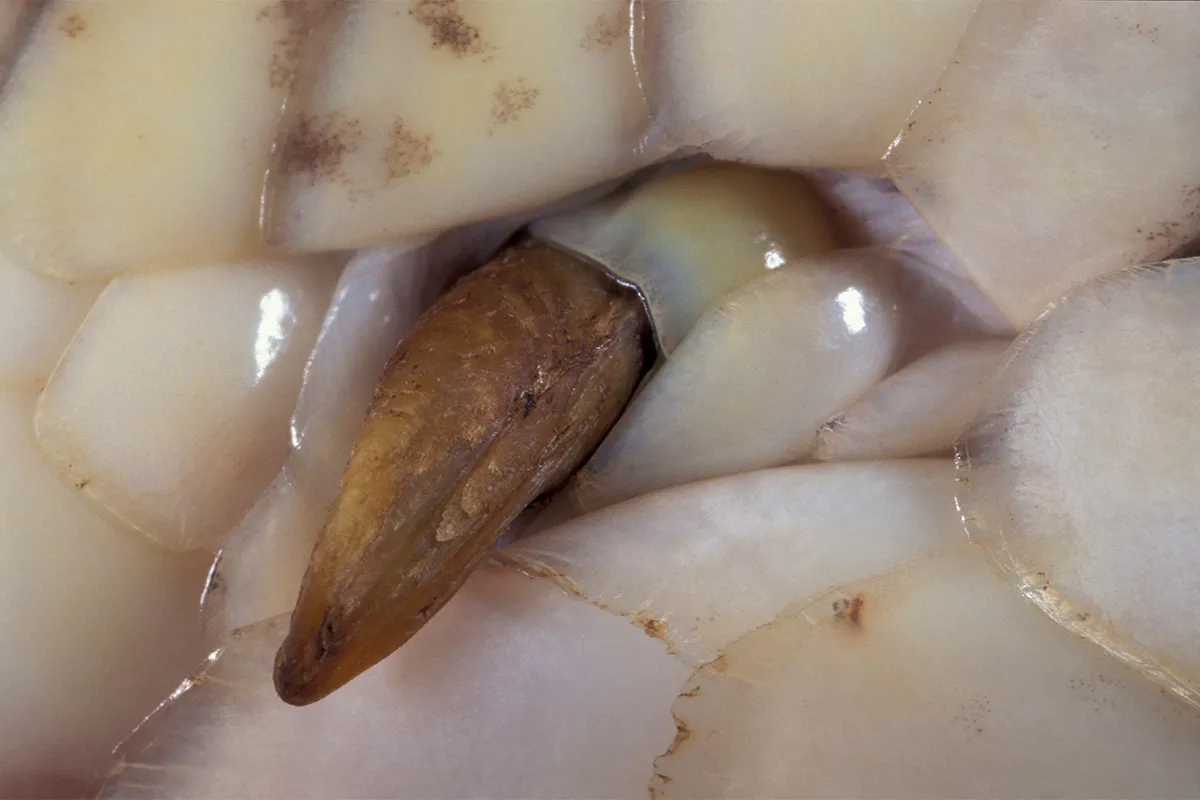
Research published in the journal Current Biology in 2016, found that python and boa embryos initiate formation of hindlimb buds, but leg development is not sustained, resulting in the growth of rudimentary femurs and claws.
About our expert, Prof Mark O'Shea
Mark is a professor of herpetology at the University of Wolverhampton. He was curator of reptiles at Midlands Safari Park for 33 years and presented O'Shea's Big Adventure on Animal Planet for five years. He has carried out numerous scientific expeditions to study reptiles, and is involved in snakebite research. He was awarded an MBE in 2020.
He has written a number of books on reptiles. His latest, Snakes Of The World (£25, Princeton University Press), is available now.
